Internal Sliding Doors: Buyer’s Guide
Table of Contents
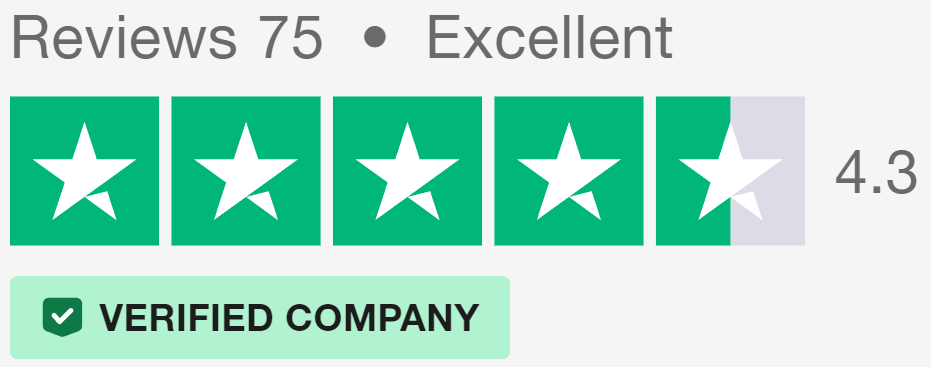
Introduction
Internal sliding doors are increasingly popular among homeowners looking for practical and stylish solutions. These doors offer a modern alternative to traditional or internal bifold doors. Whether you’re renovating your home or updating a single room, sliding internal doors can be an excellent choice.
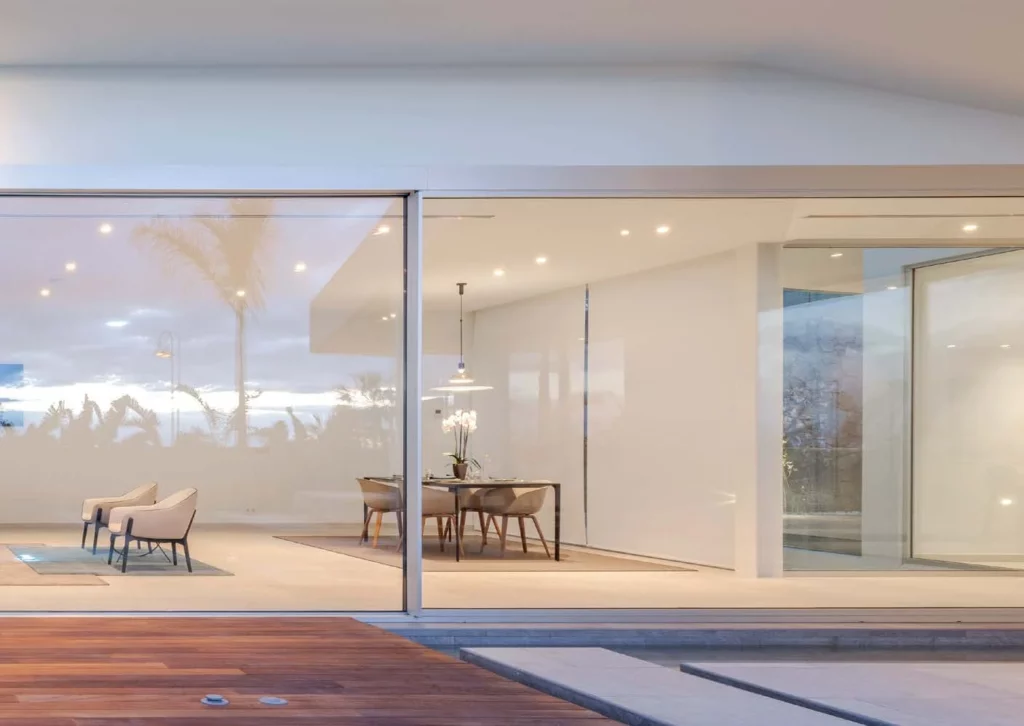
Space-Saving Design
Traditional doors swing open and require ample floor area, but sliding doors move along a track, making them ideal for smaller rooms or areas with limited space. This feature is especially useful in urban homes where space is at a premium.
Versatility in Different Settings
Modern sliding doors are incredibly versatile and can be used in various parts of your home, from living rooms to kitchens and even conservatories. Their sleek and modern appearance fits well with different interior styles, whether you prefer a contemporary or more traditional look. Often, these doors can be customised with various materials, such as glass and aluminium, to suit your home’s unique style.
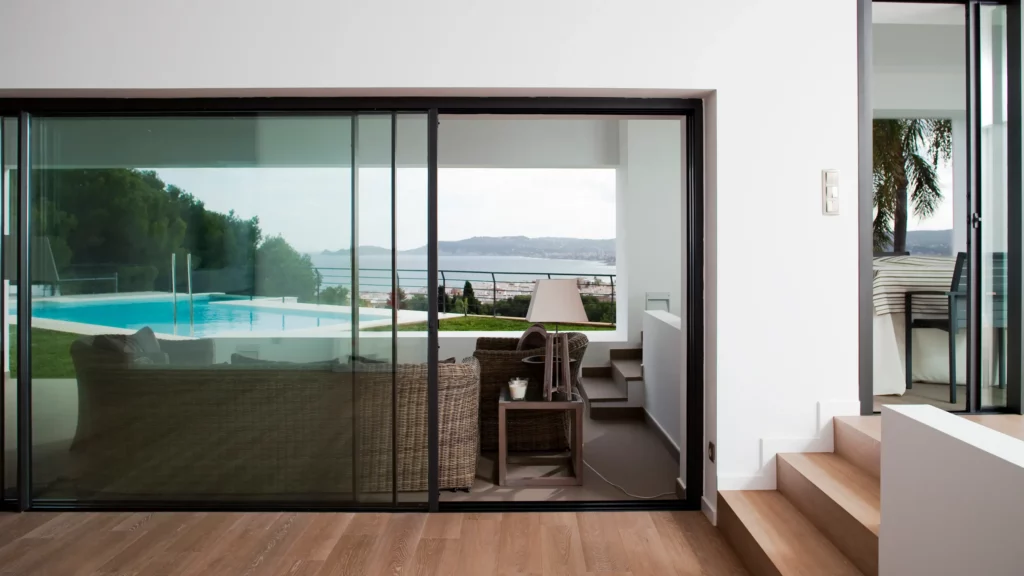
Material Choices
When selecting internal sliding doors, consider the material that will best meet your needs. Glass sliding internal doors, for instance, allow natural light to pass between rooms, creating a bright and open atmosphere. On the other hand, aluminium internal sliding doors are known for their durability and slimline profiles, making them a popular choice for those seeking a sturdy yet stylish option.
Installation
While some homeowners may enjoy the challenge of a DIY project, others might find it more convenient to hire a professional. Professional installation ensures that the doors are fitted correctly, offering smooth operation and longevity.
Boosting Home Value
Investing in sliding internal doors can also increase your home’s value. These doors are practical and add a touch of elegance to any interior. Potential buyers often appreciate the modern look and space-saving benefits of sliding doors, making your property more attractive on the market.
Types of Internal Sliding Doors
Pocket Doors
Pocket doors are a popular choice for those looking to maximise space efficiency. These doors slide into a compartment within the wall, effectively disappearing when open. This feature makes them ideal for small rooms or areas where space is at a premium. Pocket doors offer a clean and unobtrusive look, perfect for modern and minimalist interiors. Their installation requires some structural modifications, but the resulting space-saving benefits are well worth the effort.
Barn Doors
Barn doors bring a rustic charm to any interior while providing practical functionality. Mounted on a track above the doorway, these doors slide horizontally, making them a great option for spaces where a traditional door might be cumbersome. Barn doors are versatile and can be customised with different materials and finishes to suit your home’s style. Whether you prefer a classic wooden look or a more contemporary design, barn doors can add character and practicality to your space.
Bi-Parting Doors
Bi-parting doors consist of two panels that slide open from the centre, providing a wide entryway when fully opened. This type of sliding door is excellent for larger spaces or areas where you want to create an impressive visual impact. Bi-parting doors can be made from various materials, including glass and wood, allowing for both transparency and privacy as needed. Their elegant design and functionality make them a popular choice for living rooms and dining areas.
Glass Types and Finishes
Frosted Glass
Frosted glass is an excellent choice for those seeking privacy without sacrificing light. This type of glass diffuses light, creating a soft, glowing effect while obscuring the view. It’s particularly useful for bathrooms or bedrooms where privacy is a priority. Despite its translucent nature, frosted glass still allows natural light to pass through, brightening the space and giving it an open feel.
Textured Glass
Textured glass adds a unique visual interest to your sliding doors. This type of glass comes in various patterns and designs, such as ripples, geometric shapes, or floral motifs. These textures can provide a level of privacy similar to frosted glass while also serving as a decorative element. Textured glass can be a great choice for areas like home offices or dining rooms, where you might want to introduce an artistic touch.
Glass Internal Sliding Doors in Open-Plan Living Areas
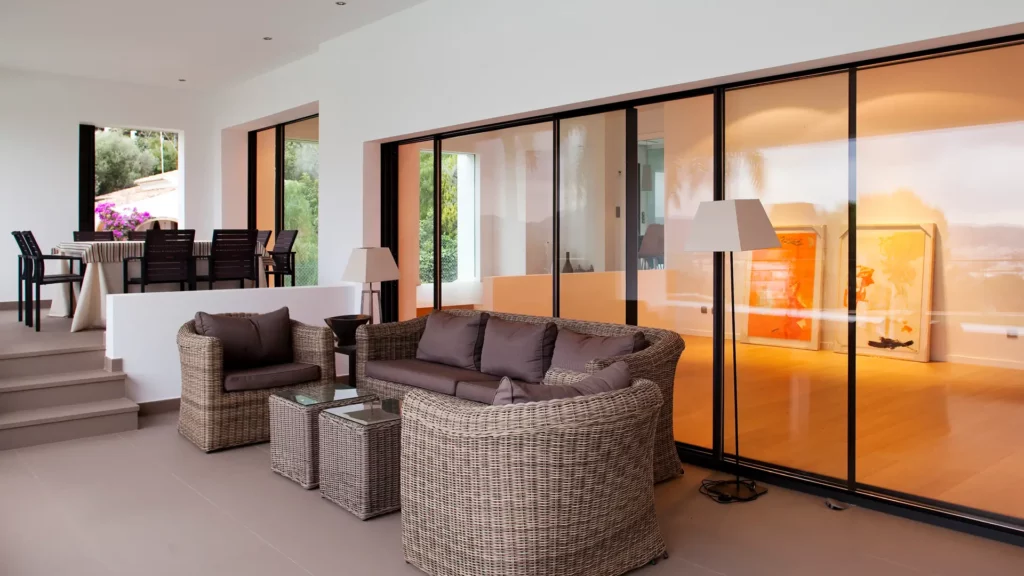
One of the key benefits of glass internal sliding doors in open-plan living areas is their ability to create distinct zones. For example, you might want to separate your kitchen from the living room to reduce noise and contain cooking smells. Sliding internal doors can be closed when you need a more defined space and opened to create a larger, free-flowing area when hosting guests. This versatility is especially useful in homes where space is limited but multifunctional areas are desired.
Another benefit is managing light and sound, for instance, you can close the doors to create a quiet reading nook while still allowing natural light to filter through if you choose glass doors. This adaptability makes sliding internal doors a practical choice for busy households.
By choosing the right doors, you can create a dynamic living environment that suits both social gatherings and quiet, personal moments.
Internal Sliding Doors in Kitchens
Space-Saving Benefits
Imagine a kitchen where every inch counts. Sliding internal doors with glass can make a big difference. They slide along a track instead of swinging open, which means no extra space is taken up by the door’s movement. This allows for more efficient use of the kitchen area, making it feel larger and less crowded. For smaller homes or galley kitchens, these doors are a game-changer, facilitating easy movement without the obstruction of a traditional door.
Natural light can transform a kitchen. Sliding internal glass doors with glass let light flow through, connecting the kitchen to adjacent rooms and creating a brighter space. Frosted glass can be particularly useful, offering privacy while still allowing light to pass through. This is ideal for separating the kitchen from living areas without completely closing off the space.
Integrating with Kitchen Design
A sleek look is essential in a modern kitchen. Aluminium internal sliding doors provide this, combining durability with a slimline profile. These doors can be customised to match the kitchen’s finishes, ensuring a cohesive design. Large internal sliding doors can also create a dramatic effect. When open, they connect the kitchen to dining or living areas, perfect for entertaining. Closed, they provide a quiet, dedicated cooking space.
Internal Sliding Doors in Conservatories
Seasonal Use
Conservatories can become extremely warm in summer and quite chilly in winter. Sliding internal conservatory doors can help manage these temperature fluctuations. In warmer months, sliding doors can be opened to increase ventilation and airflow, making the conservatory more comfortable. During colder seasons, they can be closed to keep the warmth inside while still allowing light to flood the room. This practical approach ensures the conservatory remains a pleasant place to be year-round.
Light is a critical element in any conservatory. Internal glass sliding doors maximise the flow of natural light, making the conservatory feel bright and welcoming. Even when closed, these doors maintain a visual connection with adjoining rooms, ensuring the space doesn’t feel isolated. For added privacy without losing light, frosted or textured glass can be used, allowing for a versatile solution that meets various needs.
Material Choices
Aluminium internal sliding doors are a durable and stylish choice for conservatories. They offer a slimline profile that complements modern designs and withstands the varying temperatures typical in conservatories. These doors can be customised to match the frame colours of the conservatory, ensuring a seam-free look.
Large sliding doors can create a striking feature in a conservatory. When fully opened, they can integrate the conservatory with the rest of the house, perfect for entertaining or creating an expansive living space. Closed, they provide a quiet, separate area that can be used as a retreat or for specific activities like reading or gardening.
Internal Sliding Doors and Accessibility
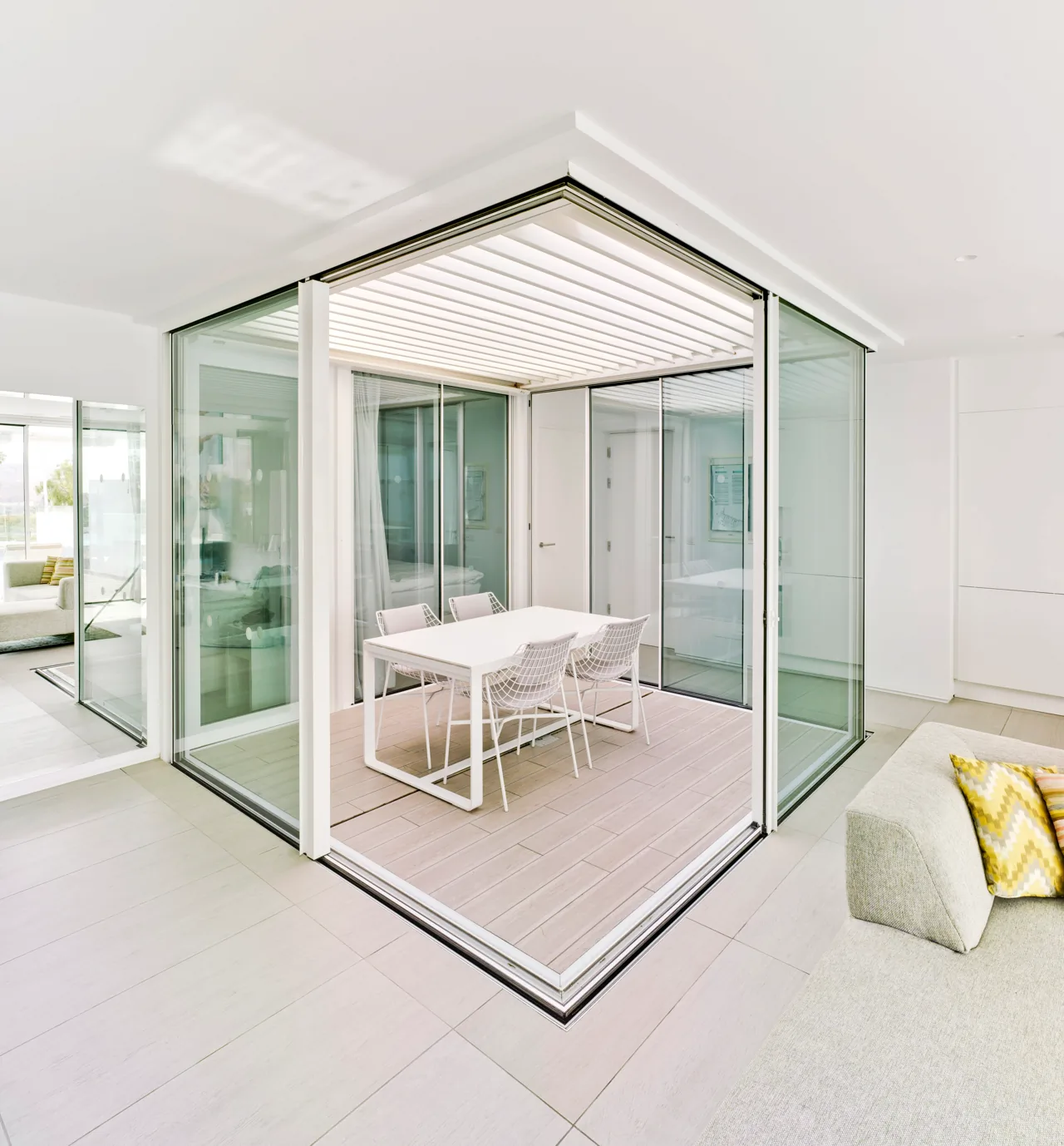
Design Features for Accessibility
Internal room divider sliding doors are ideal for improving accessibility in your home. Unlike traditional doors that can be cumbersome to operate, sliding doors move smoothly along a track. This ease of use is particularly beneficial for individuals with limited mobility, as they require less effort to open and close. Handles designed for easy gripping, such as lever handles, can further improve usability.
Low thresholds are another important feature. Traditional doors often have raised thresholds that can be a tripping hazard. Low threshold sliding doors provide a safer option, reducing the risk of trips and falls. This feature ensures a smooth transition between rooms, making it easier for wheelchair users and those with walking aids to move around the house.
Frequently Asked Questions
How do glass internal sliding doors save space compared to traditional hinged doors?
Internal sliding doors save space because they move along a track instead of swinging open. This means there’s no need to leave room for the door to swing, freeing up floor space and making the area feel less cramped. This feature is especially useful in smaller rooms or tight spaces where every inch counts. Sliding doors also allow for more flexible furniture arrangements since there’s no door arc to consider.
What types of sliding internal doors are available?
There are several types of internal sliding doors available to suit different needs and styles. These include pocket doors, which slide into the wall cavity; barn doors, which hang from a top rail and slide horizontally; and bi-parting doors, which consist of two panels that slide away from the centre. Other options include bypass doors, which slide past each other, and internal corner sliding doors, which are ideal for connecting two perpendicular spaces smoothly.
How do pocket doors differ from other sliding doors?
Pocket doors slide into a compartment within the wall, making them virtually invisible when open. This design is particularly space-efficient, as the door completely disappears, unlike barn or bi-parting doors that remain visible. Pocket doors are ideal for rooms where wall space is limited, such as bathrooms or closets, and they offer a clean, unobtrusive look.
Can glass internal sliding doors be used in small spaces?
Yes, internal sliding doors are ideal for small spaces. Their sliding mechanism means they do not require the additional floor area needed for traditional hinged doors to swing open. This makes them perfect for small rooms, narrow corridors, or compact living areas. Minimal sliding glass doors, in particular, can increase the sense of space by allowing light to pass through, making the room feel brighter and more open.
Are internal glass sliding doors suitable for open-plan living areas?
Internal sliding doors are highly suitable for open-plan living areas. They provide flexibility by allowing spaces to be connected or separated as needed. For example, living room internal sliding doors can be used to create a quiet zone or to section off the kitchen during meal preparation. When open, they maintain the flow of the open-plan layout, and when closed, they provide privacy and noise reduction.
What materials are commonly used for sliding internal doors?
Common materials for internal sliding doors include wood, glass, and aluminium. Wood offers a traditional and warm look, suitable for various interior styles. Glass, including frosted or textured glass, allows light to flow between rooms while providing some privacy. Aluminium internal sliding doors are known for their durability and slimline profiles, making them a popular choice for modern and contemporary designs.
What are the benefits of using aluminium in sliding doors?
Internal aluminium sliding doors are valued for their strength, durability, and slimline design. They are resistant to warping and rust, making them a long-lasting option. Aluminium frames can support larger panels of glass, allowing for more natural light and better views. Aluminium doors can also be made to measure, these bespoke options can guarantee a perfect fit for any space.
What design features should be considered for accessible sliding doors?
For accessible sliding doors, consider features such as low thresholds, which reduce tripping hazards and make it easier for wheelchairs to pass through. Easy-to-grip handles are essential for those with limited hand strength. The doors should be lightweight and easy to operate, and the width of the doorway should comply with accessibility standards to accommodate all users comfortably.
How do sliding doors help manage temperature in conservatories?
Sliding internal conservatory doors help manage temperature by allowing you to control airflow and insulation. During warmer months, these doors can be opened to increase ventilation, keeping the conservatory cool. In colder seasons, they can be closed to retain heat while still letting light through, particularly if you use internal sliding doors with glass. This flexibility makes the conservatory more comfortable year-round.
Can internal sliding doors be used to create quiet zones in a home?
Yes, internal sliding doors can effectively create quiet zones within a home. They are particularly useful in open-plan layouts where noise control is necessary. For instance, living room internal sliding doors can separate the living area from a home office or a children’s playroom, providing a quiet space for work or relaxation while keeping noise contained.
How can I maintain my glass internal sliding doors?
Maintaining internal sliding doors involves regular cleaning of the tracks to prevent dirt and debris from causing obstructions. Lubricate the tracks periodically to ensure smooth operation. Check the door’s alignment and adjust if necessary to prevent sticking. For internal sliding glass doors, clean the glass with a suitable cleaner to keep it clear and streak-free.
What are common issues with internal sliding doors and how can they be fixed?
Common issues with internal glass sliding doors include misalignment, sticking, and noisy operation. Misalignment can often be fixed by adjusting the rollers or tracks. Sticking may be caused by debris in the track, which can be resolved with regular cleaning. Noisy operation can be alleviated by lubricating the tracks and ensuring all components are securely fastened.
How do I choose the right internal sliding doors for my kitchen?
When choosing internal glass sliding doors for your kitchen, consider the available space and the style of your kitchen. Internal sliding glass doors can help brighten the space and make it feel larger. For smaller kitchens, slimline internal sliding doors are ideal as they take up less space. Ensure the doors complement the kitchen’s finishes and provide the necessary functionality, such as easy access and ventilation.
Can sliding doors be customised to match kitchen decor?
Yes, sliding doors can be customised to match your kitchen’s style and finishes. Made to measure options allow you to choose the exact size, material, and finish that best suits your kitchen. Whether you prefer the sleek look of aluminium internal sliding doors or the light-enhancing qualities of internal sliding glass doors, customisation ensures a perfect fit and aesthetic harmony.
How do internal sliding doors work in open-plan living spaces?
In open-plan living spaces, internal sliding doors offer flexibility by allowing you to open or close off areas as needed. For example, living room internal sliding doors can separate the kitchen from the living area during meal preparation and be opened up for social gatherings. This adaptability helps maintain the open feel while providing the option for privacy and noise control when necessary.
What are the benefits of using sliding doors in bedrooms?
Sliding doors in bedrooms save space and offer a modern look. Internal sliding glass doors can create a bright, airy atmosphere by allowing light to flow through. They are also ideal for wardrobes, providing easy access without the need for additional space to open the doors. Sliding doors can enrich the functionality and style of the bedroom, making it more versatile and comfortable.
Can internal sliding doors increase the value of my home?
Internal sliding doors can increase the value of your home by adding a modern, stylish feature that appeals to potential buyers. They improve space utilisation and can improve the overall look of your interiors. Features like internal sliding doors with glass or slimline internal sliding doors can make spaces feel more open and contemporary, which can be attractive in the property market.
Are there eco-friendly options for internal glass sliding doors?
Yes, there are eco-friendly options for internal sliding doors. Materials like sustainably sourced wood and recycled aluminium are environmentally friendly choices. Also, internal glass sliding doors can improve energy efficiency by allowing natural light to penetrate deeper into the home, reducing the need for artificial lighting. Choosing eco-friendly materials and designs can help reduce your environmental footprint.
How can sliding doors improve the functionality of a home office?
Sliding doors can improve the functionality of a home office by providing a flexible barrier that can open up or close off the space as needed. Internal sliding glass doors allow natural light to enter, creating a bright work environment, while still offering privacy. Sliding doors can also help manage noise, ensuring a quiet workspace without taking up additional floor space.
How can I ensure my sliding doors align with my home's architectural style?
To ensure your sliding doors align with your home’s architectural style, consider the materials and design elements that complement your existing interiors. For a modern look, internal aluminium sliding doors with a slimline profile can be ideal. In a more traditional home, wooden sliding doors might be more suitable. Customising your doors to match your home’s finishes and style ensures a cohesive and integrated appearance.
Slimline Sliding Doors and More
Vision Glass Doors is a designer, manufacturer, and installer of premium door systems. We are a family run business with over 20 years’ experience and 5,000 installations across the UK.
Our leading range of door systems include Ultra Slim – Slide and Turn Doors, Slimline Sliding Doors and Frameless Glass Doors. Suitable for various internal and external applications, they are applicable to residential and commercial projects.
Click Quick Quote Online for a free quotation within 24 hours. Alternatively, call or email us on 01582 492730 or at info@visionglassdoors.co.uk.

